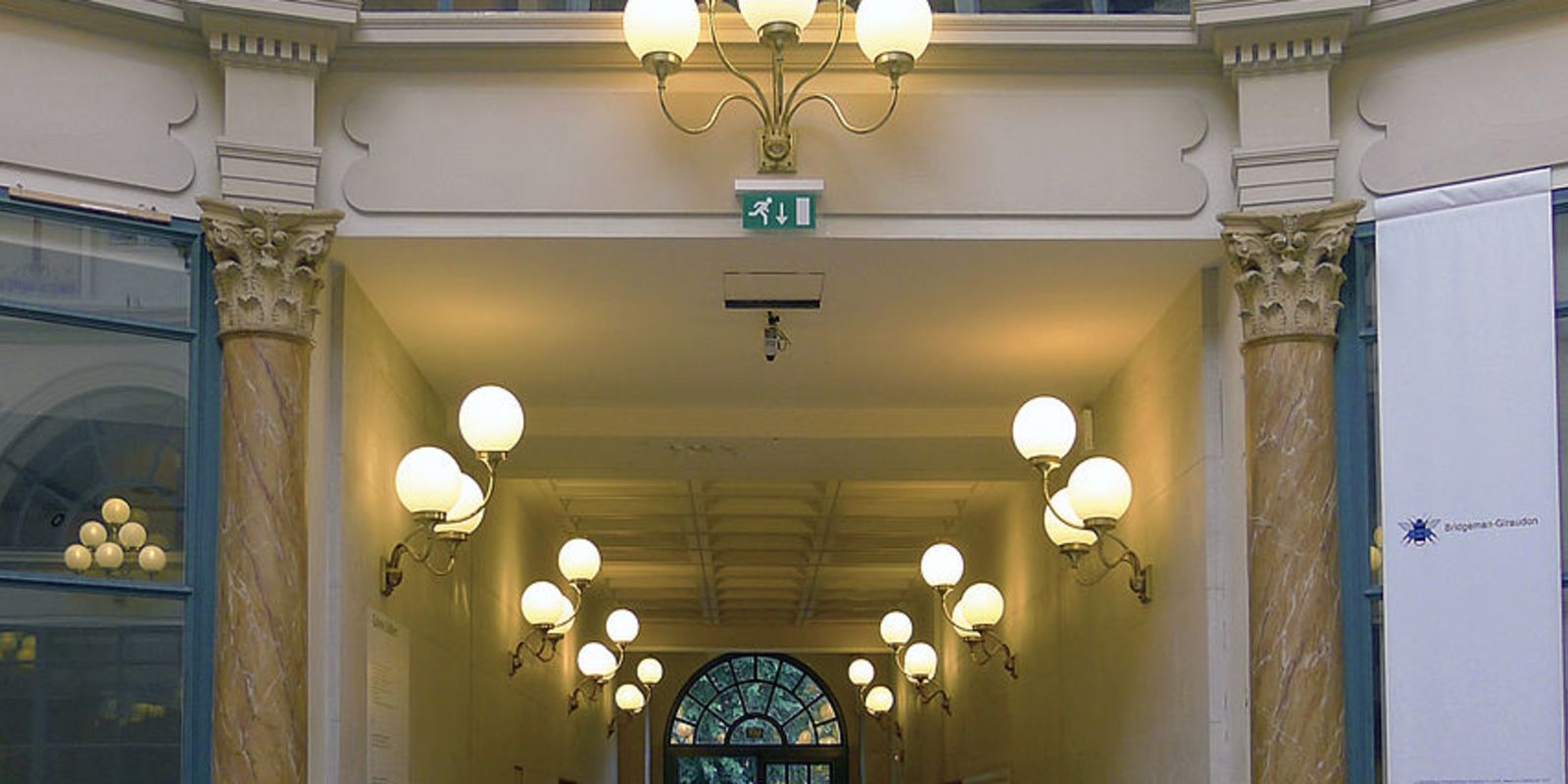Scavenger Hunt
A discovery of the city’s most beautiful covered passageways, whether populated by expensive or cheaper shops and restaurants. In the meantime, you’ll have to gather some clues to find a hidden stop.

Paris had about 150 covered passageways (typically with a glass roof) in the 1850’s, most of them having been build in the first half of the XIXth century, and the vast majority being located on the right bank of the Seine, where the upper class lived.
This parisian trend was imitated elsewhere in France and even abroad. The goal was to provide a variety of different shops while allowing customers to be sheltered from bad weather. But many passageways didn’t survive the haussmannization of Paris.
Our itinerary will show you the most beautiful (often protected as historical monuments), most interesting, most typical and most varied covered passageways, amont the 20-ish remaining open and accessible today.
Obviously, this will appeal to shopping lovers, but we also wanted to play a little game with you. During the walk, you’ll be asked to pay attention to little details and to gather 3 words, which will be necessary to unlock a mystery stop – yet another covered passageway, of course.
Come stop 6, you should have those three words ready. You’ll need to type them in the order they were hinted to you, separated by a whitespace and in lowercase. If you’re right, you’ll be rewarded with the identity of the hidden last stop.
7 stops
1. Passage Vendôme
Located between de la République square at the North and Béranger street at the South, the passageway is 57 meter long.
It was built in 1827 on part of the former des Filles-du-Sauveur covent. Despite its elegant architecture and, at first, successful shops, it underwent a rapid decline and in only a few years time it was almost deserted.
In 1969, it was shortened by about 4 meters, so its boulevard facade and part of its glass cover consequently disappeared.
The passageway remains relatively unused today, despite its proximity with one the busiest squares of Paris. It was partially renovated at the end of 2005.
Source : translated from Wikipedia contributors, “Passage Vendôme“
2. Passage Brady
One of two covered arcades located in the 10th arrondisement of Paris, constructed in 1828, it lies between rue du Faubourg-Saint-Denis and rue du Faubourg-Saint-Martin.
The only covered part is the one ending at 46, Faubourg-Saint-Denis, street. It is famous for its several Indian, Pakistani and Bangladeshi restaurants.
The other part of the passageway starts at 43, rue du Faubourg-Saint-Martin. There you can rent costumes and buy party accessories.
Source : translated from Wikipedia contributors, “Passage Brady“
3. Passage du Caire
Located in the heart of the Sentier (a cloth manufacturer district bordered west by du Sentier street, east by de Sébastopol boulevard, north by both Poissonnière and Bonne-Nouvelle boulevards and south by Réaumur street), The Passage du Caire is Paris longest passageway, as well as the oldest (1798). It is also quite thin. It was build with a rather low profile to keep rents at a reasonable level, and to attract cheap shops.
Its main interest is the exterior facade of its Place du Caire entrance, with its full set of egyptian symbols such as columns, hieroglyphs, and three heads of the goddess Hathor.
Somewhere on the facade of 2, Place du Caire, hidden among the egyptian symbols, is a caricature of Henri Bougenier, a XIXth century painter, whose nose was… huge. Will you be able to find it ? Tip : get a high-zoom lens and look up. Many drawings of this big nose were made in Paris, probably after a quarrel, by fellow painters of Bougenier.
4. Passage des Panoramas
Located between the Montmartre boulevard to the North and Saint-Marc street to the south. It is one of the earliest venues of the Parisian philatelic trade, and it was one of the very first covered, airy commercial passageways in the world.
Bazaars and souks in the Orient had roofed commercial passageways centuries earlier but the passage of Panoramas innovated in having glazed roofing and, later on, gas lights for illumination. It is thus the precursor to all the city gallerias of the XIXth century and the covered suburban and city shopping malls of the XXth century.
The passage was built in 1799 on the former site of the Montmorency-Luxembourg private hotel. Its name comes from an attraction installed above the original entry : two rotundas where panoramic views representing the landscapes of large cities were projected. The rotundas were destroyed in 1831.
In the 1830s, the architect Jean-Louis Victor Grisart renovated the passage and created three additional galleries inside the block of houses : the Saint-Marc gallery parallel with the passage, the gallery of the Varietes which gives access to the entry of the artists of the theatre of the Varietes, and the Feydeau galleries and Montmartre.
Stern the famous engraver settled there in 1834, then merchants of postcards and postage stamps, and some restaurants moved in. The part of the passage close to the Montmartre boulevard is richly decorated, while the distant part is more modest. The passage, as it was in 1867, is described in chapter VII of Émile Zola’s novel Nana.
Source : Wikipedia contributors, “Passage des Panoramas“
5. Vivienne Gallery
This famous covered passageway, located between Place des Victoires, the French National Library and the Palais-Royal Garden, opened in 1826 under the name of its commissionner, Marchoux. It was a time where such places, allowing to shop while sheltered from the rain, were quite popular.
The three entrances to the Gallery are : 6, Vivienne street ; 5, de la Banque street ; and 4, des Petits-Champs street.
At the number 13 of the Gallery, one can admire a big staircase with a wrought iron ramp. It was François Vidocq’s, a former convict who became chief of police between 1811 and 1827, house in the late part of his life.
There are a few masonic symbols throughout the Gallery. One in particular, at the entrance of… But wait, we won’t tell you which entrance, will we ? Tip : it is a symbol of fraternity.
6. Colbert Gallery
Build in 1826 in an attempt to compete with the nearby Vivienne Gallery, it has never had as much success as the latter.
Fully renovated in the 1980’s, Colbert Gallery was bought by the French National Library and now houses the National Art Institute and the National Heritage Institute.
Source : translated from Wikipedia contributors, “Galerie Colbert“
7. Hidden stop !
Scavenger huntShopping
Map, navigation, practical information, extra pictures and more are available on the Paris Parcours app.
